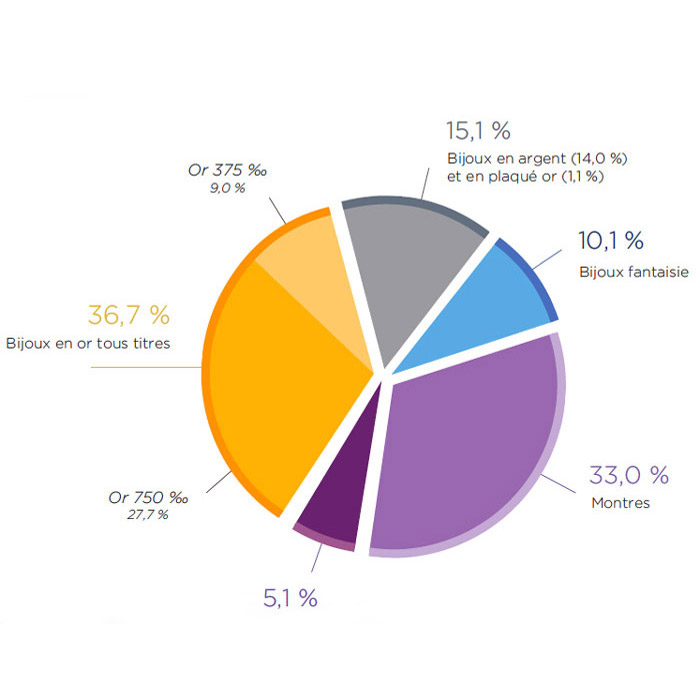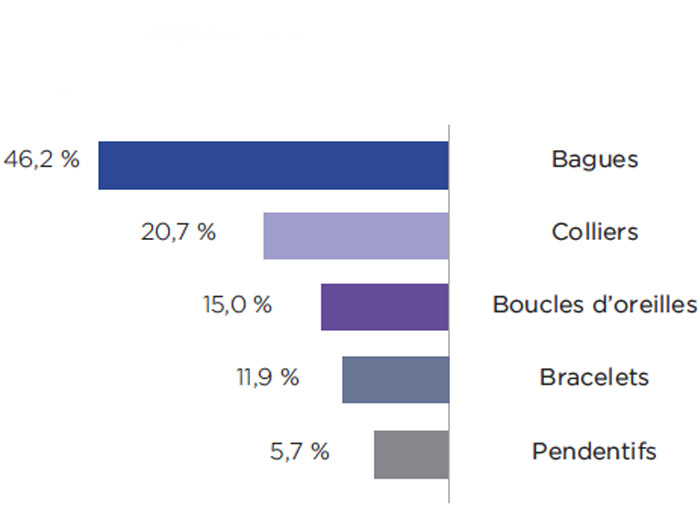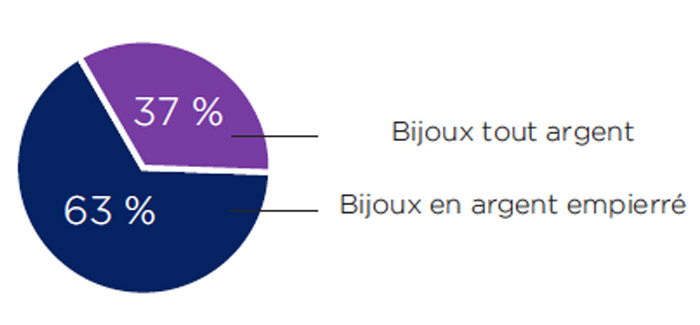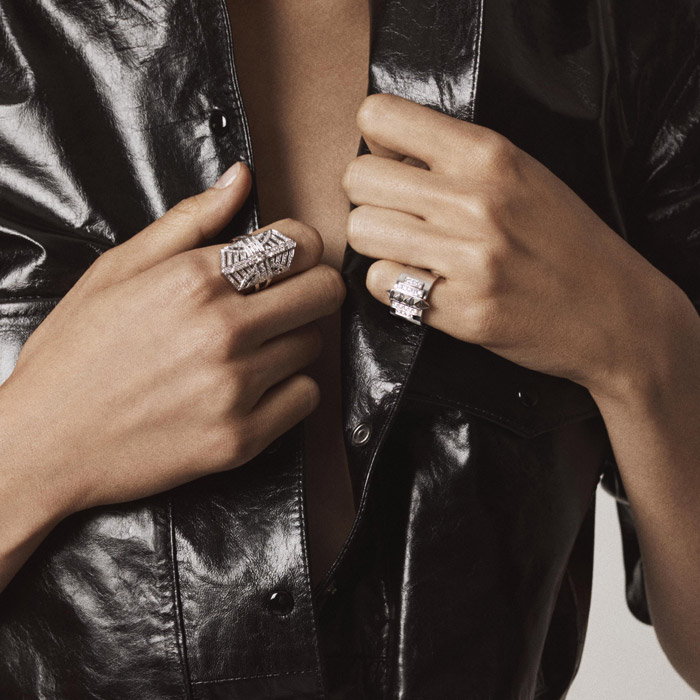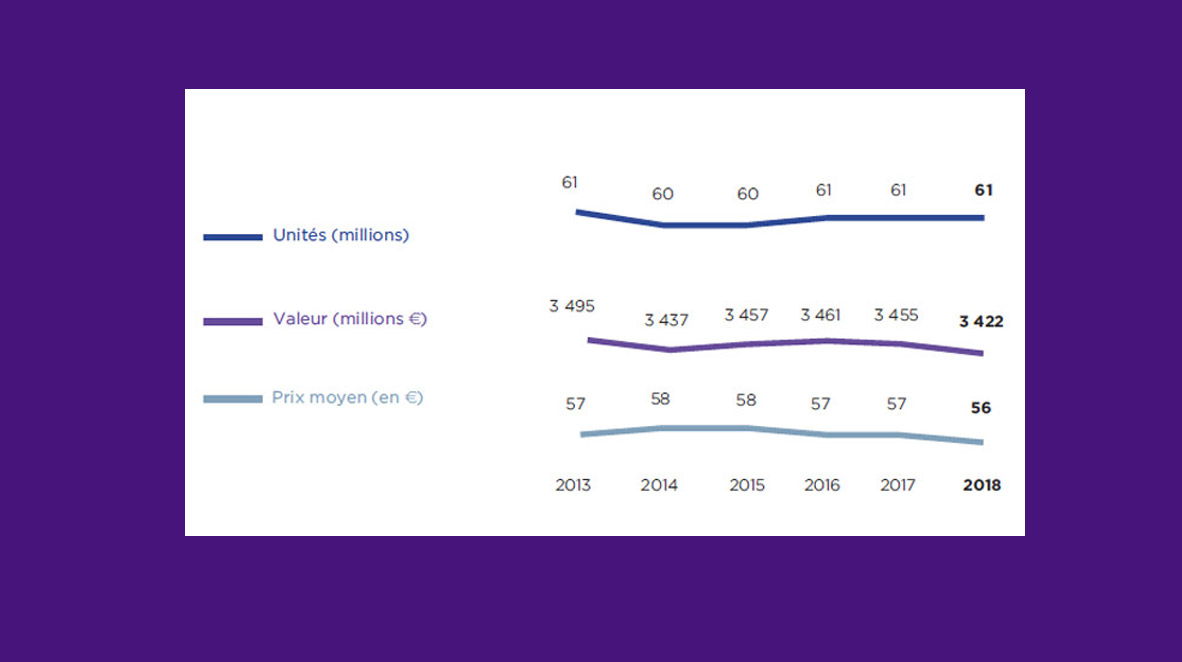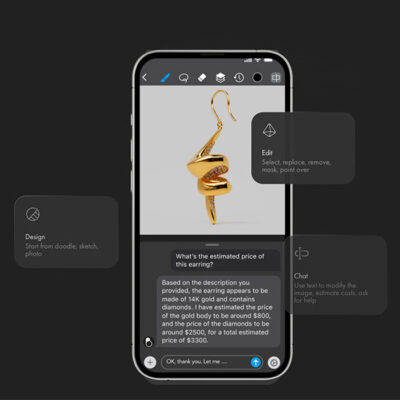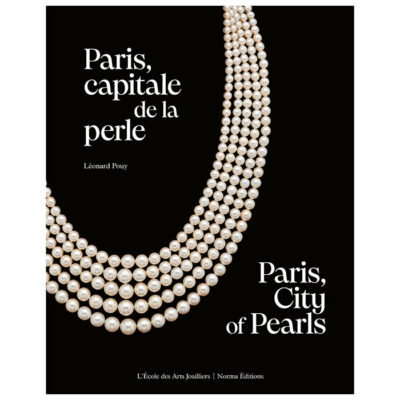Business
23 February 2019
Share
Jewelry in France in 2018
How did the French jewelry market look in 2018? Which pieces were most frequently bought? Are synthetic diamonds a thing of the future? Every year, Francéclat* reveals an overview of consumption in France provided by the company Panel5.
In a word, it’s not a disaster, but there’s not much cause for rejoicing either. As with Europe as a whole, the jewelry market (apart from haute-joaillerie) is stagnant in France. In 2018, it represented €3.4 billion, i.e. less than 2% of the global market. Worth noting is the lost revenue (due to the Yellow Vest movement between 15 November and 31 December), estimated at between €160 and 190 million.
A flagging mid-range
In France, what people were still mainly buying (46% of jewelry) was rings: solitaires, wedding rings and signet rings, followed by necklaces (21%) and earrings (15%). Three-quarters of pieces were in 18 carat gold (7500/00), and the remaining quarter in 9 carat (3750/00): a category that developed during the boom in the gold price. The mid-range, between €300 and €1,000, suffered the most, while jewelry costing over €1,000 and fancy pieces (in brass, crystal, etc.) rose slightly. “Fancy jewelry was shored up by brand launches and the creation of numerous stores,” says Panel5 CEO Hubert Lapipe.
Silver, beads and charms
The success of charms and beads has made silver an ultra-dynamic sector in France, even though the trend lost momentum in 2018. “In reality this slight drop, masked by the phenomenal success of the Pandora brand, goes back to 2012,” says Hubert Lapipe. Surfing on the trend, brands focused on this niche. Everyone had charms and beads to collect, didn’t they? Today, very few are refreshing their offering with new products. One solution is to combine this metal with diamonds, like Amélie Huynh with her spanking-new brand, Statement Paris.
Diamonds versus pearls
One global trend was the success of jewelry made of gold or set with precious stones (central or in paved form). In this register, diamonds were the clear winners: in 2018, they were found in 43% of pieces, compared with 38% in 2011. This level hasn’t been seen in France since the Eighties and Nineties, when the DTC (Diamond Trade Company, the marketing subsidiary of the top producer, De Beers) spent a fortune on promoting them. On the other hand, cultured pearls, whether from Tahiti or Japan, were less fashionable. Hubert Lapipe ascribes this to a huge communication deficiency.
Natural versus synthetic diamonds
Synthetic diamonds have been much in the news, even if purchases are still negligible. “We assessed a price difference of 50% between a solitaire with a synthetic diamond and one with a natural diamond (at equal sizes between 0.30 and 1.50carats),” says Lapipe. This makes it possible to win over a new clientèle and bring the most expensive diamonds (yellow, blue and pink) within more people’s reach. Right in the niche of Lightbox, a brand launched by De Beers last year.
The future of independent stores
There were 14,000 independent timepiece-jewelers in 1977; now there are barely 3,000. They benefit from proximity, but find it hard to deal with the desertification of town centers, the rise in the property costs and the search for customized jewelry offered by brands like Atelier Paulin. Independent stores also have to factor in the growing demand for traceability. And finally, they need to adapt to the rapid rise in distance sales (+12%in 2018) and new ways of communicating via the social media! “Changes are accelerating, and many of the stores that do everything, all on their own, will go under. They need to regroup and pool costs and skills,” says Hubert Lapipe in conclusion. Watch this space.
Professional Committee for economic development serving the watch and jewelry sectors. It’s financed by the HBJOAT tax.
Related articles:


